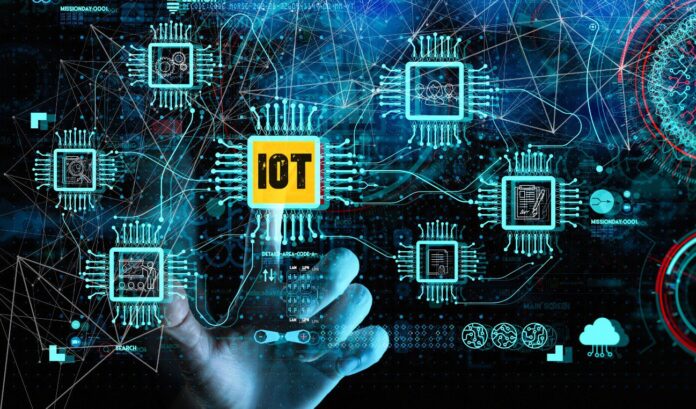The IoT platform market is innovating and expanding, and about to boom. So says ABI Research, which has counted 62 companies offering connectivity management platforms for enterprises to keep track of their varied IoT estates, and calculated $31 billion will be spent on them by enterprises and municipalities five years from now, up from $12.14 billion (more than double / 100 percent growth) at the end of 2021.
Importantly, it reckos the benefits realised in operational efficiency and productivity from IoT installations in general, managed in IoT platforms, will be more considerable. Jamie Moss, research director at ABI, said: “The demand-side revenue that the enterprise purchasers of these services will realise in their ROI – be it for downstream connected services and products sold, or internal operational processes optimised – will be far greater still.”
ABI, promoting a new report into the subject, describes connectivity management platforms (abbreviated as CMPs in ABI-talk) as “table stakes” for most IoT projects, and for any business seeking to make a go of IoT service provision. It says that, despite their status as root-level essentials for IoT, the rate of innovation has “not abated”, and that competition is fiercer than ever.
In a snapshot of the CMP market, it said the $31 billion sales figure will be picked up by enterprises and municipalities (smart cities) on the end-customer side, and by original equipment manufacturers (OEMs) on the supply side, looking for white-label platforms to offer with their gadgetry and solutions. It notes IoT platforms are available as proprietary bespoke and commercially licensed options.
It said, as well, that IoT platforms tend to be sold in piecemeal fashion, and offered effectively as loss leaders to drive the sale of underlying device, security, and data management modules. “[Products from] the largest CMP vendors – such as Cisco and Ericsson – have always acted as gateways to jointly sell [with partners] to the same customers. IoT platforms are famously modular, with enterprises piecing together what they need from a variety of suppliers.
Moss said: “Today, the CMP is also a nodal product for turnkey IoT system providers, acting as a gateway product to promote the sale of value-added components of their portfolio, and ideally the full stack. From an enterprise customer perspective, CMPs are not typically charged for, but device management, and security management, and data orchestration platforms are, with CMPs acting as a ‘single pane-of-glass’ interface over them all.”
But the market is changing, as well, said ABI with providers looking to “ascend the value chain”, invariably in their own ‘vertical’ niches, as the CMP market becomes commoditised. This process “inevitably involves becoming a connectivity supplier,” said Moss. “Connectivity is literally the glue that brings together all the supply-side elements of IoT. Connectivity is the medium through which all IoT value is delivered, and all enterprise results are achieved.”
Companies providing IoT platforms, one way or another, have sought to partner with or buy specialist IoT outfits in recent years to raise their value and profile. Moss said: “The most famous carrier-grade CMP vendors plateaued in terms of unique contract awards years ago. 80 percent of Cisco’s licenses came before the end of 2015, and more than 80 percent of Ericsson’s came before the end of 2018.”
He added: “For Ericsson and Cisco, operator partner investments are now paying off as both firms have experienced huge growth in the number of IoT connections their platforms manage over the last several years.” At the same time, their over-the-top IoT platforms have remained symbolic, even iconic, for such suppliers and their customers as “the face(s)” (management interfaces) of their various IoT value propositions.
Even so, the IoT platform market has picked up “beyond [these] largest suppliers” with newer entrants driving the innovation agenda in the space. Moss cited the examples of FloLive and 1NCE. “[They] simplify the onboarding and payment processes, and the federated provision of global connectivity – that is boosting the market and will help to carry it forward over the next 5 years,” he said. The full report is available to buy here.

